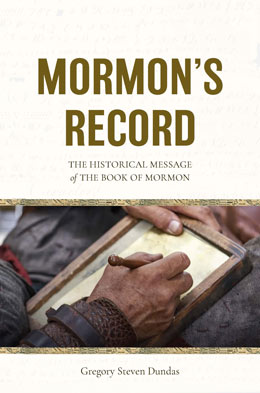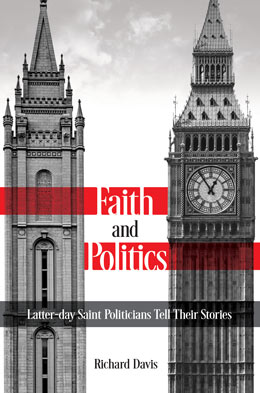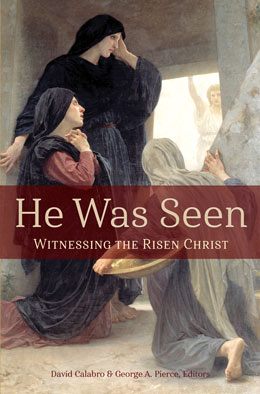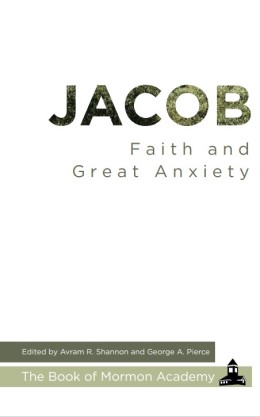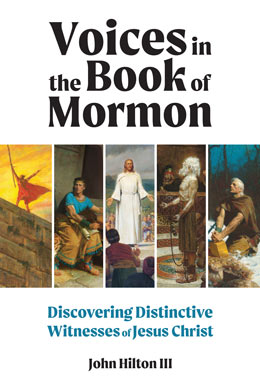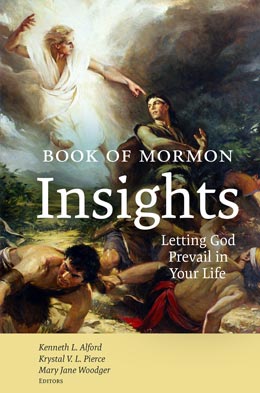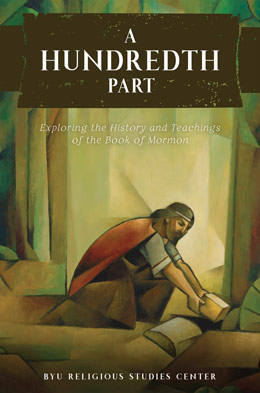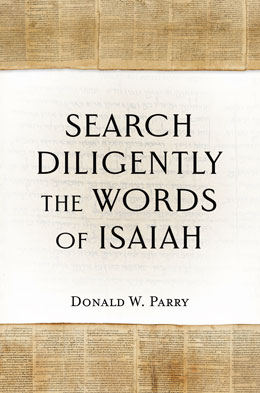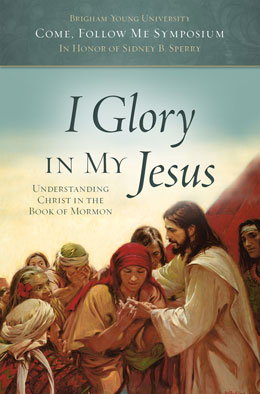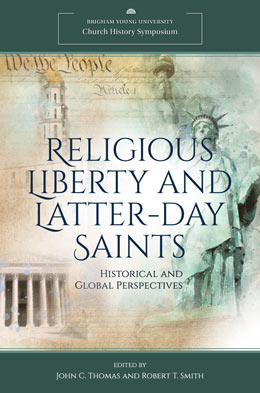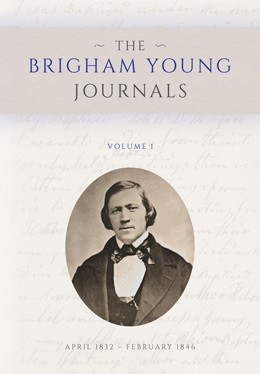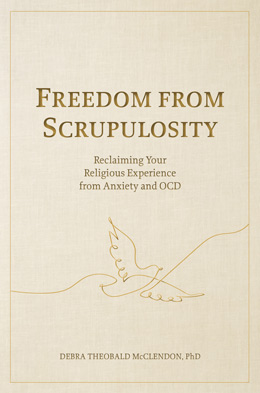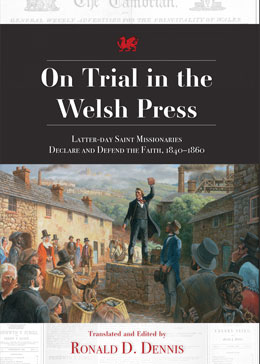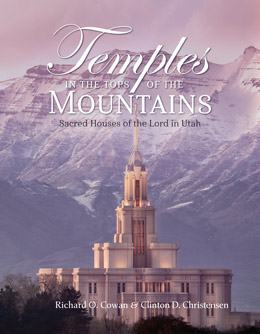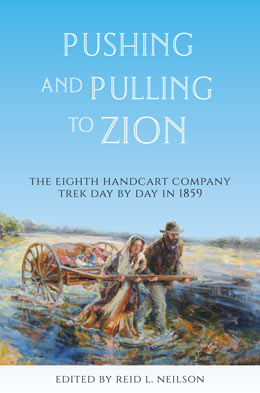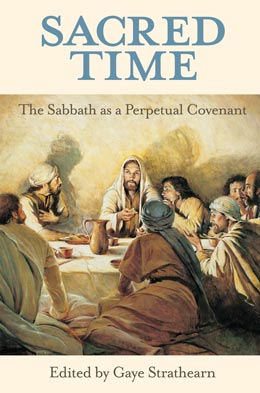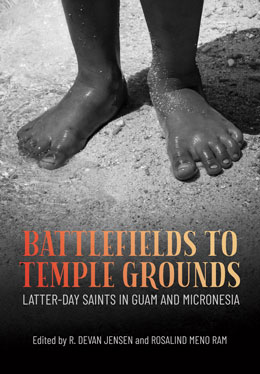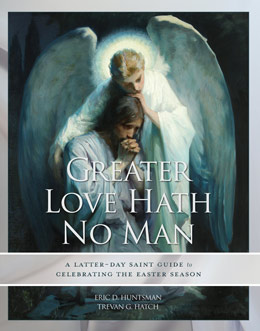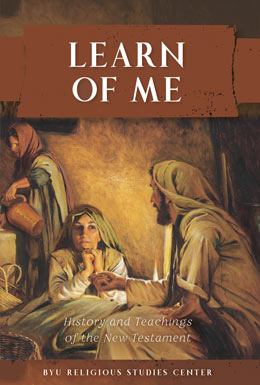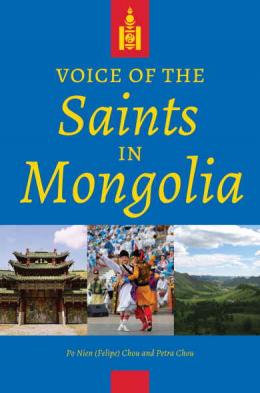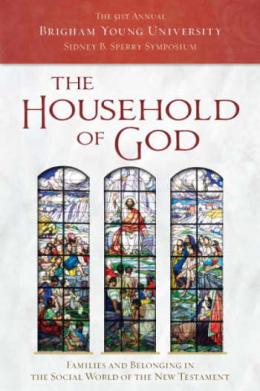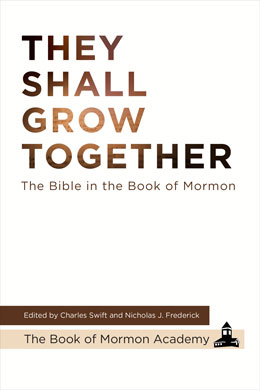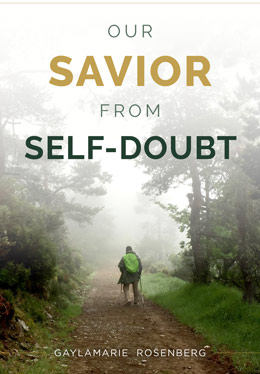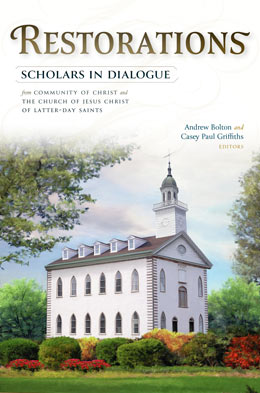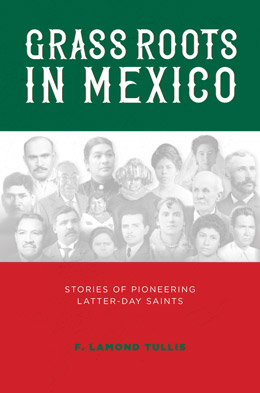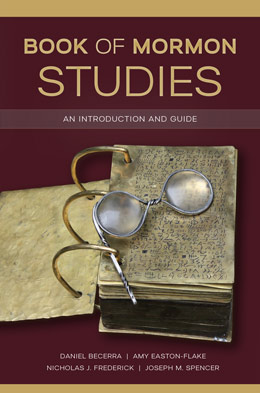Religious Studies Center Books
Although the ancient scriptural record known as the Book of Mormon contains profound doctrinal and theological content, it is foremost a history. Thus, it is not surprising that it has the earmarks of ancient rather than modern works of history. Yet few studies analyze the Book of Mormon as a legitimate work of ancient history. The author describes the sacral worldview that informed much of ancient writing, surveys four millennia of historical writings to show how the sacral worldview differs from modern historiography, and discusses many underlying historical themes found in the writings of Israelite and Greco-Roman historians that also figure in the composition of the Book of Mormon. That scripture’s sobering theological message is shown to emerge from the historical accounts that inform it.
The Church of Jesus Christ of Latter-day Saints has declared the church’s political neutrality while urging individual church members to participate in the political process, become informed about the issues, and choose candidates who demonstrate integrity and compassion. Some wonder if faith and politics can coexist harmoniously. This book features twenty-five interviews with active Latter-day Saint politicians who have served or currently serve in offices at the local, state, and national levels in several countries. They also represent a broad array of political parties and ideologies.
In his letter to the Corinthians, the apostle Paul bore witness of Jesus Christ, giving the saints at Corinth a list of eyewitnesses who had seen and interacted with the risen Savior and repeating the phrase “he was seen.” Those who experienced Christ after his Resurrection include Mary Magdalene, other women, Peter, James, Stephen, Paul, other apostles, and more than five hundred brethren. In the latter days, witnesses of the living Christ continue to bear testimony of him. This volume points to many reasons to fortify our faith in the Son of God, to deepen our discipleship, and to believe in the Lord’s Resurrection and the Restoration of the gospel. These essays encourage all to spiritually see and experience the risen Christ, affirming Paul’s declaration that “he was seen.”
Jacob, the Book of Mormon prophet, is often overshadowed by his brother Nephi and his father, Lehi. But upon further examination, we discover a prophet with an exceptional story and an intriguing contribution. Jacob was among the first in his family to be born outside of Jerusalem, allowing him to bring unique doctrinal questions and perspectives to light. We find a leader who was extremely worried about the welfare and harmony of his people, perhaps because of the continuous conflict he experienced within his own family. We find a man who was open about experiencing “great anxiety,” making him a scriptural figure that many of us can relate to.
A closer look at the writings of Jacob shows that while his story seems short, his doctrinal contribution to the Book of Mormon and to Latter-day Saint understanding is significant. This volume from BYU’s Book of Mormon Academy explores Jacob’s life, teachings, and importance. Twelve Book of Mormon scholars analyze his writings and his life, revealing connections between Jacob and Old Testament prophets, the doctrinal implications of Jacob’s teachings throughout the Book of Mormon, and some of the lessons we can take from Jacob’s life.
This volume provides an in-depth look at this great prophet, giving us a greater appreciation for this man who worked throughout his life “with faith and great anxiety” to bring others to Christ.
Hidden from the world for centuries, the words of ancient Book of Mormon prophets whisper from the dust their witness of Jesus Christ. These prophets were individuals with distinctive speaking patterns that are unique in vocabulary, style, and thematic emphasis.
The fruit of more than a decade of research, this book compares the linguistic fingerprints of many major speakers in the Book of Mormon, from Nephi and Mormon to Jacob and Jesus Christ. It also shows voices speaking in harmony as later prophets use powerful phrases from their predecessors. Each chapter ends with thoughtful discussion of how identifying a speaker’s distinctive voice can spark greater understanding and application of his message.
These voices highlight the textual richness and complexity of the Book of Mormon, providing meaningful evidence that Joseph Smith did not write it. More importantly, they shed new light on Book of Mormon prophets’ distinctive testimonies of Jesus Christ.
This volume is an anthology of essays written by Book of Mormon scholars and educators that encourages readers to take a fresh look at Book of Mormon teachings, stories, and people. It contains a wealth of knowledge, insights, and concepts that will enrich one’s understanding and appreciation of the ancient record. An appendix of quotations by leaders of The Church of Jesus Christ of Latter-day Saints highlights numerous specific blessings and promises associated with reading and studying the Book of Mormon.
This volume represents some of the more compelling articles on the Book of Mormon that have appeared in Religious Studies Center publications. Each has advanced the field of Book of Mormon studies in unique and innovative ways and has provided insights into the doctrine, history, and message of the Book of Mormon.
The book of Isaiah is an exceptional, one-of-a-kind scripture—both in its presentation and in its message about the Savior Jesus Christ and his Atonement. Moreover, the book of Isaiah is significant because it presents the direct words of Jesus Christ (Jehovah) throughout its pages, totaling more than 200 quotations. Truly, Isaiah is an extraordinary work!
This volume is designed specifically to help members of The Church of Jesus Christ of Latter-day Saints the Church better comprehend and appreciate how Isaiah’s writings can be understood to testify of Jesus Christ, his restored gospel, his mortal ministry, his Second Coming, his millennial reign, and the Restoration of the gospel.
At the beginning of the Book of Mormon, Nephi writes, “The fulness of mine intent is that I may persuade men to come unto the God of Abraham, and the God of Isaac, and the God of Jacob, and be saved” (1 Nephi 6:4; emphasis added). He later writes, “I glory in my Jesus, for he hath redeemed my soul from hell” (2 Nephi 33:6). The pinnacle of the Book of Mormon occurred in 3 Nephi when Jesus Christ personally ministered to the Nephites and Lamanites. Clearly the central purpose of those writing on the plates was to invite and persuade each of us to come unto Jesus Christ, helping us understand his redeeming role.
In 1842 Joseph Smith published a sketch of “Church History” that included two core ideals: “We claim the privilege of worshipping Almighty God according to the dictates of our own conscience” and “We believe . . . in obeying, honoring and sustaining the law.” These statements occasionally stand in tension with one another as Church members seek to ensure free exercise of religion while upholding the law. The history of The Church of Jesus Christ of Latter-day Saints amply illustrates the challenge its members have faced to freely exercise their deeply held religious convictions when those convictions were condemned by law. This volume offers historical and global perspectives on how the Latter-day Saints’ understanding of religious freedom has been forged through the crucible of their experience.
In April 1832, as Brigham Young sat wet after his baptism and ordination to the office of elder in the newly restored Church of Christ, a fire began to blaze within him. “I wanted to thunder and roar out the Gospel to the nations,” he recalled. “I had to go out and preach, lest my bones should consume within me.”
The same impulse that spurred him to preach far and wide for years prompted him to begin a journal to preserve a record of those labors. This first volume of The Brigham Young Journals presents Young’s pre-Utah journals, which include three written in his own hand (1832–45) and his Nauvoo office journal kept by clerks (1844–46). Despite some substantial gaps, both records afford unique glimpses into Young’s life and ministry as well as matters of moment—both triumphant and turbulent—in early Church history.
This first volume, produced under the imprimatur of BYU Press, comes from a research team of editors of The Joseph Smith Papers. It features frequent editorial overviews, minimal use of transcription symbols, extensive annotation, detailed physical descriptions of each journal, and photographs. Reference material includes maps, a chronology, and trip itineraries. The verbatim transcriptions reproduced herein show Brigham Young to be a tireless missionary, devoted family man, and able Church leader in the making.
This book is a comprehensive examination of religious scrupulosity, with a focus on treatment. In part 1, the author describes basics about anxiety, OCD, and scrupulosity and how each is related and interconnected. Part 2 explores scrupulosity on a deeper level, including what researchers have learned about scrupulosity. In part 3, McClendon discusses treatment considerations and presents a gold-standard, evidence-based approach to treatment. The interventions described can serve as a stand-alone self-help treatment for scrupulosity or as an adjunct to working with a mental health professional.
Since the mid-nineteenth century, only a modicum of attention has been given to the amazing success of the Latter-day Saint missionary effort in Wales. This book provides valuable historical context and publication information about The Church of Jesus Christ of Latter-day Saints in the Principality of Wales during the 1840s and 1850s—the Church’s beginnings, its growth, and its progress amid the constant opposition and allegations from other religious persons and organizations that felt threatened by the doctrine and proselytizing of Latter-day Saint missionaries.
This volume shares the story of Utah’s temples, now numbering twenty-eight. Organized chronologically, this gorgeously illustrated book begins with the iconic pioneer-era temples and elaborates on each era of Utah temple building since, including temple remodels and renovations, tabernacles renovated into temples, and new temple designs that maximize efficiency and accommodate patrons in less-populated areas. The stories of the miracles behind these temples show the hand of God in the lives of the Saints and the faith and efforts that have built so many temples in the tops of the mountains in Utah.
While much attention has been given to the ill-fated Martin and Willie handcart companies, few books have examined other handcart companies traveling to the Utah Territory. This volume follows the members of one handcart company by sail, rail, and trail all the way from their New York port to their destination in Salt Lake City. Primary sources from diaries and journals help to tell a compelling shared story, providing readers with a multifaceted perspective of lived religion on the Mormon Trail and strengthening faith through the story of this company’s pushing and pulling to Zion.
How does a person live the commandment to keep the Sabbath day holy in a world that is vastly different from the commandment’s original context with Moses on Mount Sinai? Chapters in this volume explore the Sabbath throughout time, examining the Old Testament and the New Testament; the post–New Testament Christian Church during the second through the fourth centuries; the rabbinic teachings; and modern efforts to keep the Sabbath relevant, including the Restoration and other Christian and Jewish efforts.
This is the first comprehensive history of The Church of Jesus Christ of Latter-day Saints in Guam and Micronesia. Just as currents mingle while they make their way across the Pacific, powerful waves of colonial and Christian culture have intermingled with indigenous culture in Micronesia. European, Asian, and American nations have variously claimed or colonized the islands of Micronesia, exerting influence in politics, education, and the economy, treating the islands as strategic bases or resources. The indigenous people have reacted to each wave of colonial influence and adapted, intermingling cultures. After Japan’s bombings of Hawai‘i, Guam, and Wake Island, Latter-day Saint military personnel arrived in Micronesia. Waves of missionaries began teaching the military personnel and islanders, leading to creation of the Micronesia Guam Mission and the Marshall Islands Majuro Mission, which includes Kiribati. Some of these Pacific battlefields have become peaceful temple grounds.
This volume follows the same user-friendly format of the earlier God So Loved the World: The Final Days of the Savior's Life, organizing the chapters according to the traditional days of Holy Week with expanded discussion and additional materials. After discussing the scriptural accounts for each day of Holy Week, the chapters then summarize how these scriptural events have been celebrated through the centuries in different Christian traditions before sharing suggestions on how Latter-day Saints can both study the texts and commemorate the events in their own families.
This volume of collected essays is intended to assist disciples of Jesus Christ in coming to a deeper understanding of the Savior and his ministry through their personal study of the New Testament. Because the period and culture of the New Testament can be daunting to modern readers, the editors gathered the work of Latter-day Saint scholars who have devoted time and research to gaining a greater understanding of the New Testament. The editors included essays written from a variety of perspectives to highlight the different lenses that can productively be brought to bear on the New Testament. Some of these essays are overtly devotional, while others are more explicitly academic, but all are written with the intent to help each of us accomplish one goal: to learn of him.
In discussing home-centered worship, this volume explores both individual and family worship and draws from reports from a diverse sample of more than five hundred Latter-day Saints who have shared the challenges and barriers they have faced—and successes they have experienced. Individuals and families can establish and maintain a home-centered religious life and strengthen their conversion to the gospel by using these real-life experiences, quotes, and key findings in the social sciences.
This is the first comprehensive history of The Church of Jesus Christ of Latter-day Saints in Mongolia. The nation is known for its rugged countryside and is called the "land of the eternal blue sky" because of the country's many days of sunlight, though the harsh climate in Mongolia is really one of short, hot summers and extreme, cold winters.
In such a harsh climate, one might not expect the gospel message to thrive, but it has. Through groundbreaking first-person accounts, the authors have captured and shared the voice of the Saints in this land, highlighting vital aspects of the establishment, growth, and development of The Church of Jesus Christ of Latter-day Saints in Mongolia. From Ulaanbaatar to Darkhan and the other regions of the country, the translation of the scriptures, the creation of stakes, the development of local leadership, building efforts, Deseret International Charities, and administration of the Church, the Mongolian Saints have felt to acknowledge the hand of the Lord in this effort.
The 51st Annual Brigham Young University Sidney B. Sperry Symposium
The related themes of households and families figure prominently in the New Testament. On various occasions Jesus taught about marriage, divorce, and more general familial relations. Jesus, Peter, and Paul also taught about the important contributions single members and widows make in the kingdom and such household complexities as mixed-faith marriages or relationships between slaves and masters. Thus, the New Testament contains much counsel on household conduct, familial relationships, and belonging to "the household of God" (Ephesians 2:19).
The Sperry Symposium, named in honor of pioneering Latter-day Saint scripture scholar Sidney B. Sperry and held on the campus of Brigham Young University, seeks each year to examine and illuminate an aspect of the religious and cultural heritage of The Church of Jesus Christ of Latter-day Saints.
This fourth volume by the Book of Mormon Academy at Brigham Young University is a careful study of the intersections of two ancient texts: The Book of Mormon and the Bible. The authors approach the two books of scripture from within two fundamental frameworks. First, several of the essays explore the books in terms of the worlds from which they come with their related ideals, interests, and origins. Second, a number of the authors analyze topics based on the texts themselves, closely studying the two texts and helping readers better understand connections.
Self-doubt limits our perception of our potential and diminishes our joy and hope in who we are and what we can become. When we don’t feel good about ourselves, we have help. Jesus Christ saves us not only from our imperfections but also from our imperfect understanding of ourselves. This book explores sources of self-doubt and the impact of positive psychology in changing our thought patterns. It emphasizes an often-ignored dimension of the Atonement of Jesus Christ: how Christ helps us overcome self-doubt and unproductive thinking.
This book contains reflections from two groups of scholars who trace their beginnings to the early Saints who built the Kirtland Temple. These scholars come from the two largest branches of the Restoration movement, Community of Christ and The Church of Jesus Christ of Latter-day Saints, who have often found themselves on the opposite sides of many issues. This book is filled with honest, frank conversations between people of the two faiths but also collegiality and friendship. Centered on twelve themes, this dialogue is about bringing together informed scholars from the two churches working together, with goodwill, to accurately understand each other.
This book tells the inspiring stories of nineteen pioneering Latter-day Saints in Mexico, exploring how and why they converted to the Church and what happened to them, their families, and their descendants afterward. Despite personal, economic, political, social, and religious struggles that tested their newfound faith, these members, like countless other Mexican Saints whose stories are yet untold, turned their lives to the Savior's gospel of life and salvation and carried on as exemplars to their people.
Where does one go to learn more about Book of Mormon studies? For those who do not regularly engage with scholarship, it’s hard to know how to begin. Currently there’s no general guide to Book of Mormon scholarship available to the public. Even with all that’s happened in the last few decades, and especially all that’s happening right now in Book of Mormon studies, this situation needs to be remedied. There has been no general guide to Book of Mormon scholarship available to the public—until now. This introduction breaks down Book of Mormon studies, from its history to the obstacles that will need to be overcome as it moves forward. Additionally, this introduction provides readers with resources that they can turn to for further information on Book of Mormon studies.
